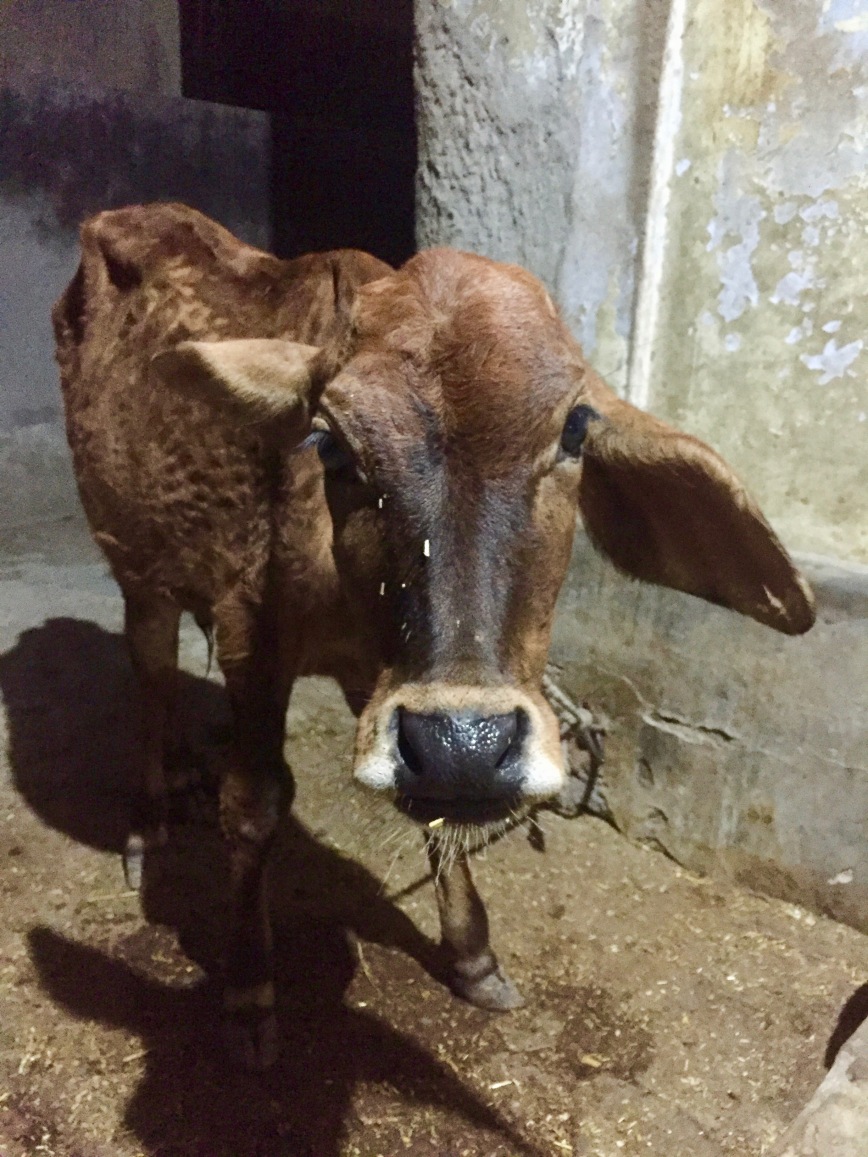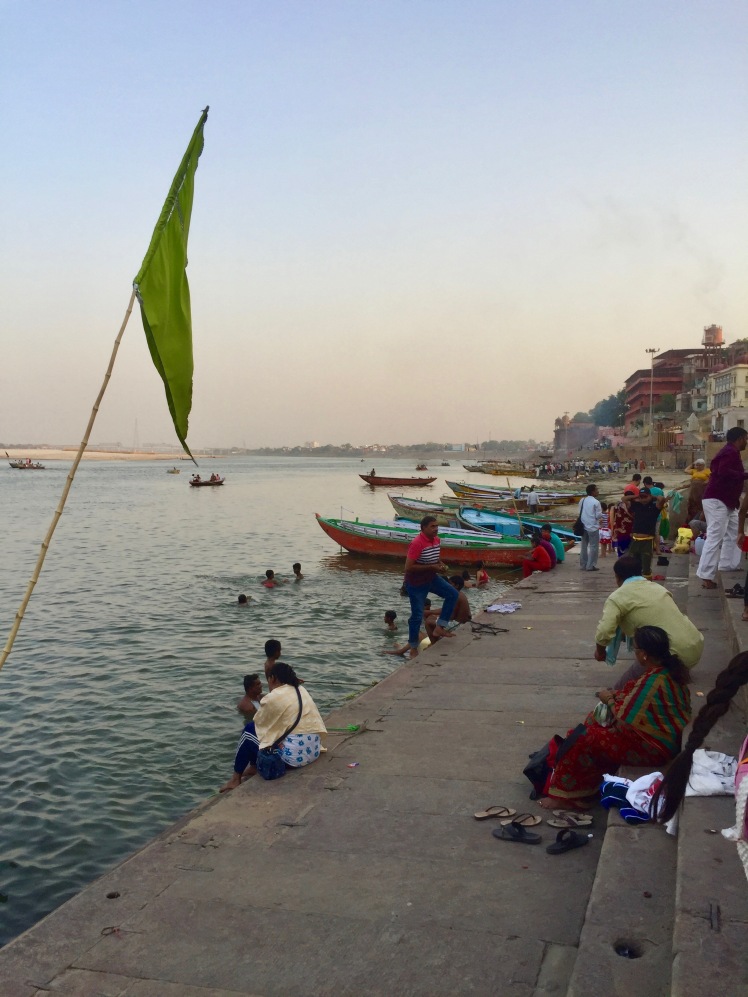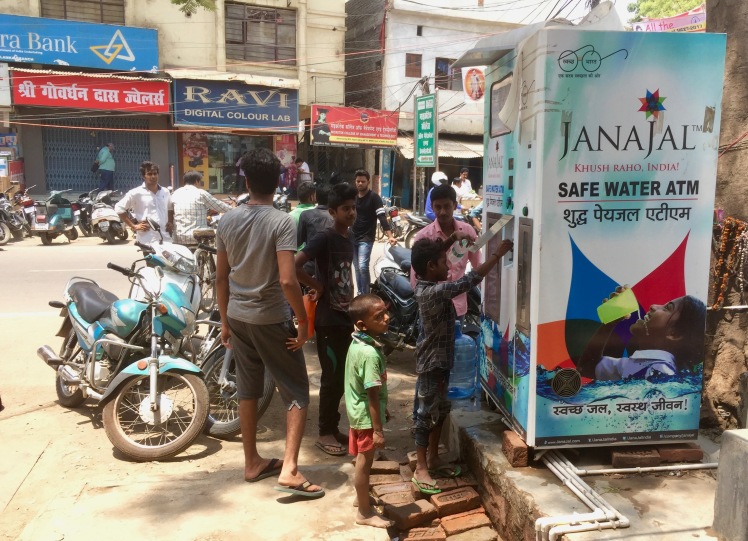Varanasi so far…
So day three living as a family member in Varanasi is drawing to a close and I thought I would share my thoughts so far.
To be completely honest, arriving at my guest house I contemplated how I would be able to survive here for almost four weeks. The house is home to a lovely couple and their two daughters, all whom have great English and are used to guests. It’s traditional, modest and open, with a living room I’m free to use and luckily a filtered water system, which means I am able to fill up bottles from a tank in the kitchen to chill – something I would come to highly appreciate. The house is complete with cows in the front yard, lizards in my bathroom and monkeys which scare passing goats.
My first thought was how I was even going to find my way around the city, cross roads or know where to find decent food – all legitimate fears for a traveller not used to being alone and navigating what is largely a male orientated world. But what I have found in Varanasi is refuge in the generosity of those around me and to an extent an appreciation for the simple things in life (very cliche).

Currently it’s between 40 to 45 degrees here – a heat I have never experienced before. And doing anything is made ten times harder when you are sweltering. On my first night I didn’t sleep well – the ceiling fan was quite loud and only just enough to keep you lukewarm – four weeks seemed like an extremely long time to live in what is sometimes unbearable temperatures.
I was shy to ask for things – keen not to come across as unappreciative, wary of strangers and nervous to introduce myself to other groups of travellers. I think it has been stepping out of my comfort zone in all of these departments which has eased life in Varanasi. Fully integrating into family life, feeding Nandi the cow a chapati before we eat (a Hindu ritual) and approaching friendly faces has allowed me to find my place in the city. And I have been overwhelmed by people’s openness and kindness. Prabudatt and Pintu have, as I think many of their guests have said before me, become sort of like my Indian parents and have taught me so much about Varanasi and how to find some kind of peace in travelling alone. I have settled into family life, been taken to buy some traditional Indian Kurtas, which are long cotton tops, and moved upstairs with the family to a cooler room. Four weeks now looks like it is going to be okay.

Participating in water politics
Ironically, the one thing I will never take for granted again is water. It’s quite funny that the topic of my research has also affected me in so many ways. The heat here makes a lack of water, which is ideally at least cool, intolerable and not least dangerous. At my guest house the family are lucky enough to have a water pump in their home, which takes water straight out of the ground which is then filtered and accessed through a separate tank in the kitchen. I have been able to chill this fresh water in the fridge and take it out with me in the mornings, curbing the expense of buying litres and litres of bottled water.
In being appreciative of my fortune, it has given me some personal insight and empathy to my topic of study. I wouldn’t say that water here is scarce, most homes have taps and municipal water supply flows for a few hours in the mornings and evenings, with families then storing it for the rest of the day. Otherwise, during the day and for those without access in their homes, there are hand pumps and taps along the road sides in the city. I am told this is either taken from the ground or filtered from the Ganga, but as the river becomes more polluted the water quality has suffered causing increasing numbers of people health and hygiene related issues.

Water pasts and futures
Water here is significant not just for lives and livelihoods, but also for people’s tradition and culture. The progression of industrial development in India and urban population growth has caused significant increases in pollution, with waste from leather factories upstream in Agra polluting the Ganga. Sitting one morning on the steps of Assi Ghat a man told me, “before life was simple, people would bathe and drink the Ganga water because that is the Varanasi tradition, and it was clean enough to do so. Industrial development in India and increased water demand is ruining this culture, heritage and tradition, leading to more people becoming sick or looking elsewhere for their daily water uses”.

But I feel it is not just the increased pollution in India’s rivers which are causing people to reflect on their water consumption. Many people are more worried about cleanliness of themselves and of the environment in line with Modi’s rhetoric of good governance and every Indian contributing to and requiring a clean India. Meanwhile those who can afford it install water filtration systems in their homes, drink bottled water or buy filtered water from new water ATMs which have been set up in the city. For those who cannot afford it, they continue to use the municipal water supply – while this is good to drink for the majority of the population (only around 10% of the city are regularly using filtered water), it does have lapses in quality. Furthermore, the expansion of water filtration is causing huge issues of water waste. On average for every 20 litres of water filtered about 10 litres is wasted – an issue the government will be required to tackle if they hope to supply the nation with safer water.

The expansion of civic consciousness and an increased recognition of hygiene is coupled by what I have experienced as a politics of forgetting, and the compromising of citizenship status of those who occupy the informal spaces of the city. Today I spoke to one young-professional at Varanasi Junction rail station, where a filtered water ATM is located next to free public water taps and sinks. When I asked why some people were buying filtered water, sold for 5 rupees per litre, and some were drinking the tap water he said “those who are drinking the tap water are incapable of knowing the difference in quality, and do not care for their hygiene. Most have money but they don’t care for participating in cleanliness”. It is for this reason, rather than the poverty in which some people in the city do live, that the majority of people think that an extensive system of safe filtered water in India is both not possible and not necessary – because for them, ‘some people’ are unable and unwilling to use it. I’ve come to learn that when people say that filtered water is available for everyone they often mean those who can either afford or appreciated its purity, a kind of class differential between hygienic and unhygienic citizens.
As India develops these issues of water pollution and the demand for filtered water throughout the day to a more discerning population will become significant challenges, both in terms of cost, infrastructure and water waste. For the time being, while water is not scarce, I feel that access and quality of water is still mediated by identity – issues I aim to explore further in the next few weeks in the context of the Clean India Campaign.
And happy birthday to my Dad if you’re reading this!!!
I am reading this and enjoying hearing about your experiences. Thanks for the birthday wishes. I’m an OAP now!
Love
Dad
LikeLiked by 1 person
What a fantastic blog, Thank you Ellie. It’s great to have a glimpse of what to expect next week! ^.^ I Hope your research goes well, and we will see you soon enough! P.S. Please save us some of that chilled water… making me thirsty just reading this! x
LikeLike